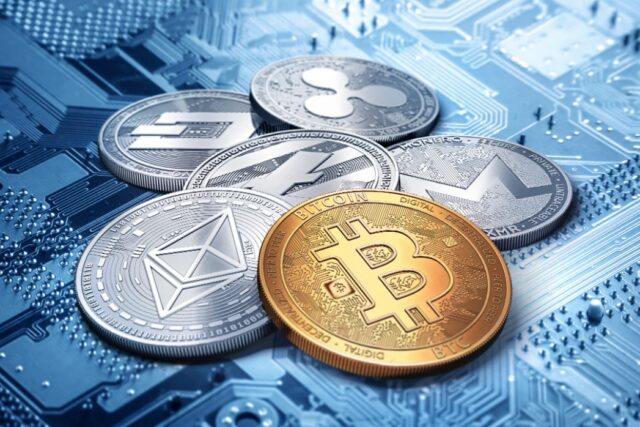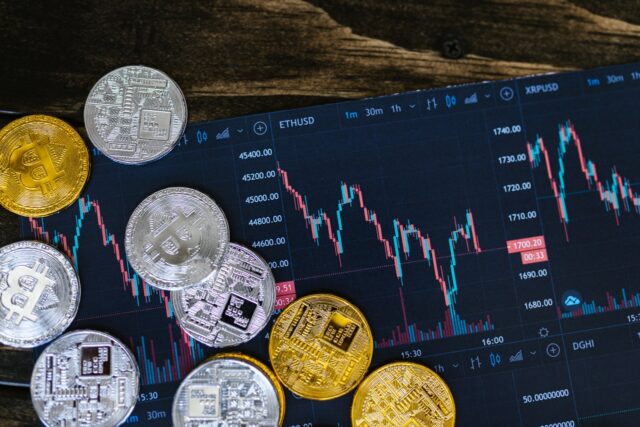
Unless something extraordinary happens, cryptocurrencies are likely to become the preferred method of online payment in the future. Although digital currencies have only been available for a few years, they have already had a significant impact in a number of countries throughout the world.
Bitcoin and Ethereum, for example, are becoming increasingly popular as their prices have risen considerably. As a result, they’ve become a popular choice among investors, traders, and everyday consumers.

Even though there are numerous advantages to cryptocurrencies, there is one significant risk that you must face with whichever digital currency you pick: volatility. Many people have profited millions of dollars due to the considerable upswings, while others have lost much more.
What is the source of its irregular behavior, though? What causes the cryptocurrency to rise and fall in value? Is this industry ever going to reach a point of equilibrium? If you’re interested in learning more about crypto trading and start trading yourself, visit this website.
What is the Importance of Volatility?
There’s a reason why practically every cryptocurrency expert will advise newcomers to invest no more than they’re willing to lose. Due to immense price movements in a highly volatile asset like Bitcoin, an investor’s total portfolio value could unexpectedly take off a lot higher or much lower than they expect or are ready for.
5 Reasons Why Cryptocurrency is Volatile

1. A Brand New Market With Low Liquidity
Despite the hype surrounding cryptocurrencies, the market is still insignificant compared to traditional trade assets such as fiat currency and gold. When contrasted with the $7.9 trillion gold market and the $28 trillion US financial exchange, even the all-time high valuation of $813 billion set in 2017 is little.
Because this is a small market with few participants, small forces can significantly impact price. When an investor sells $500 million in gold, it has little impact on world gold prices, but when converted to Bitcoin, it has the potential to upset the market and produce a significant price swing. Furthermore, because it only takes a few large orders to send values skyrocketing or tumbling, market manipulation is rampant in crypto markets, ranging from coordinated pump-and-dump tactics by collectives to deliberate inflating or deflating of trading volumes by exchanges. Malicious behavior regularly causes alarm, which leads to even more volatility.
2. Decentralized Money
Virtual currencies, which do not have a physical foundation, make up the vast majority of cryptocurrencies. Because the price is based on supply and demand, this has a significant impact. Because bitcoin’s price is reasonably predictable, its price is solely decided by the number of people interested in buying it. The amount of inventory available determines the price. No reinforcement can cover the sum, and no power can propel a payment component.
This suggests that faith determines the value of bitcoin. It can rise or fall very quickly, and nobody has some control over it. Those who don’t feel the price will remain stable will sell their bitcoins at some point. As a result, the market is disrupted, resulting in substantial market swings. Due to recent market changes, individuals who did not expect to sell their coins have chosen to do so. As a result, the cost of goods is significantly reduced. The inverse can also happen. Pricing could skyrocket, attracting more people into the cycle and exacerbating the problem.
3. Attitude of Investors

Because investors can wager on whether the price of specific cryptocurrencies will rise or fall by buying and selling, the crypto market will remain volatile until it becomes more established and accepted globally. When cryptocurrency becomes mainstream, investors will understand the factors that drive its growth.
The inherent volatility of the cryptocurrency market attracts speculative traders looking to profit large quantities of money by correctly anticipating price changes. You can benefit in the digital money market on the off chance that you can foresee when the cost of Cardano or Matic will rise, or again in the event that you can anticipate inferred instability and purchase before it does. Unfortunately, these speculative investments exacerbate an already unpredictable market by increasing market volatility.
4. Major Holdings & Limited Supply
The limited supply of some crypto coins is another major contributor to cryptocurrency’s extreme volatility. Some crypto coins, like Bitcoin, have a restriction, unlike fiat currencies, which have an endless supply. As a result, factors such as demand and supply have a substantial impact on the value of a well-known and promising digital currency like Bitcoin. Besides, on the grounds that crypto is a computerized resource, its value is exclusively determined by supply and demand, as previously stated.
Due to the restricted supply, some entities may eventually acquire considerable holdings in crypto, such as Bitcoin, and thus be able to impact the ascent and fall of crypto markets by selling or purchasing vast amounts of that crypto coin. This adds to the general erratic nature of the market. However, it’s important to remember that the risk of volatility might be offset by substantial gains.
5. The Internet and Social Media

Regardless of whether we like it, social media has become an essential part of our lives. People can generate money by advertising different things on platforms like Instagram. It’s no wonder, then, that social media has a significant impact on the bitcoin market.
Many platforms influence Bitcoin and other digital currency prices, but Twitter is perhaps the most popular. Elon Musk, for example, frequently tweets about cryptocurrencies, which has an impact on their value.
Conclusion
The truth is that cryptocurrencies are still at an early age, and their worth is continuously changing. Because no one understands a cryptocurrency’s genuine value, prices will continue to fluctuate until their real-world applications are better understood.
While their volatility isn’t as severe as some claim, it will take time for the sectors to change and represent the genuine value of these digital assets. As these assets’ underlying worth and application become more widely understood, cryptocurrency values are likely to become less volatile over time. As a result of the lower volatility, cryptocurrencies will become more valuable as currencies and digital assets of all types in the real world.







